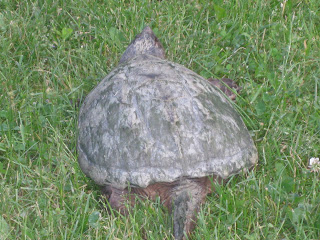Robert Frost used the simile "Like graveyard marble sculpture in the weather," to describe how this place where someone once lived now looks. Old gravestones are always there, they keep their shape and don't move, but they fade after time and have a look of abandonment about them. This must be how this house looked. You can tell what it is, you can see it's shape. But at the same time it has also been left and forgotten. "A house that is no longer a house' is repeated again in the poem, tying it all up, giving the reader something to remember.
Frost also used repetition in one section of his poem to give it a little character and fluidity.
"A house that is no longer a house
upon a farm that is no longer a farm
in a town that is no longer a town."
This section really stands out to me, it's poetic uniqueness is very powerful. It sets up a great mood for the rest of the poem. Repetition like this can always have that effect in poems. It helps our brain remember and then we think about it later, making the poem stand out.
The imagery in this poem is really what tells the story. Because he is telling about something he has seen it is imperative that he gives us something to picture.
"light rustle rushes to their leaves" is one of my favorite lines because as i was reading it, it was easy to picture the wind gently rustling the leaves as if they are saying hello. This shows in it's own way, how nature really has taken over this place, which is really the point of the poem. To me this is a powerful way to say so much in one line.
In conclusion, Robert Frost's poem "Directive" tells a story perfectly of how a place where a house once was is now taken over by nature and is just a cellar hole, with a few shattered dishes. He does this by using similes, repetition, and imagery to paint a picture and tell a story. This poem is a wonderful example for all these things.



